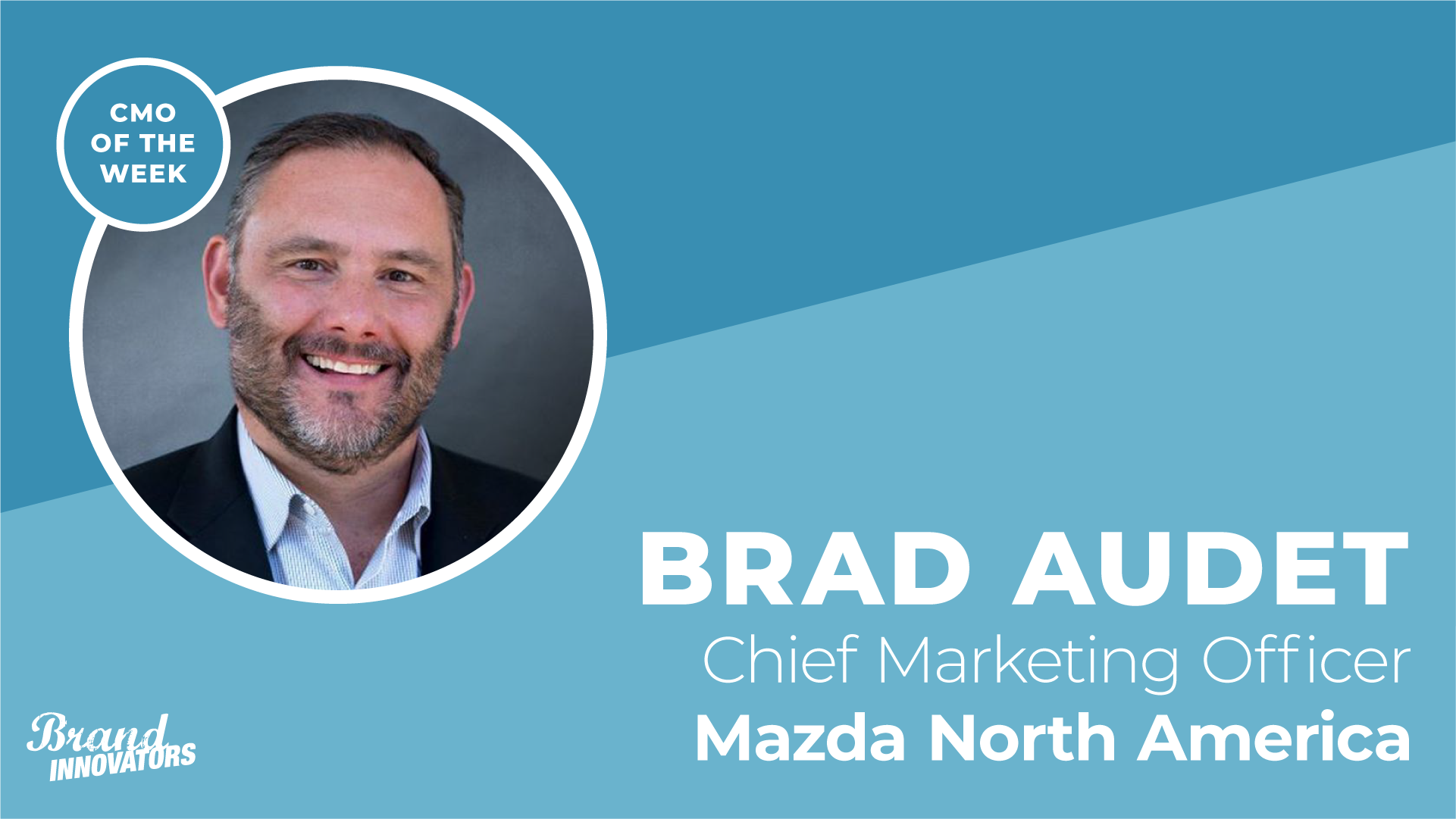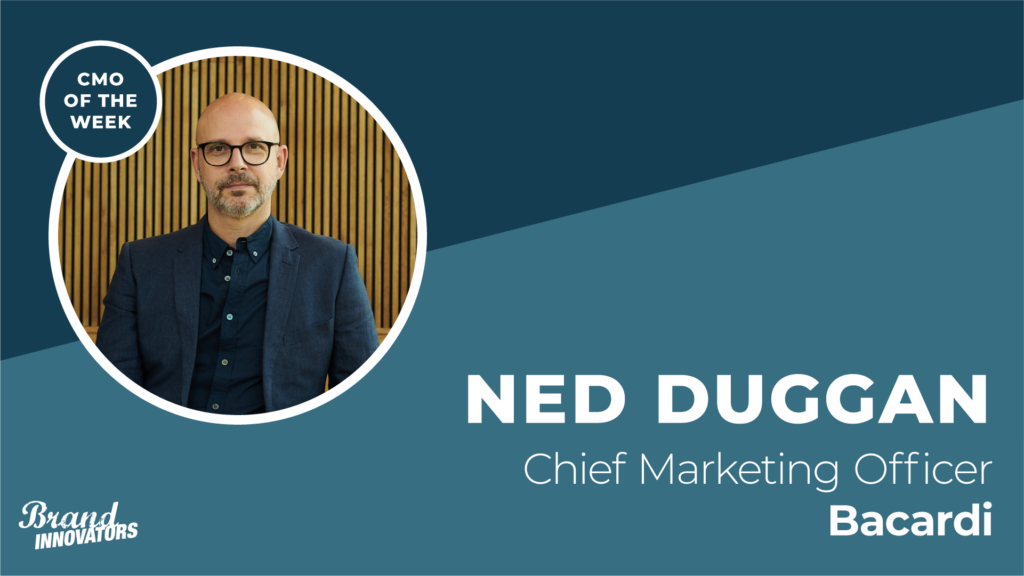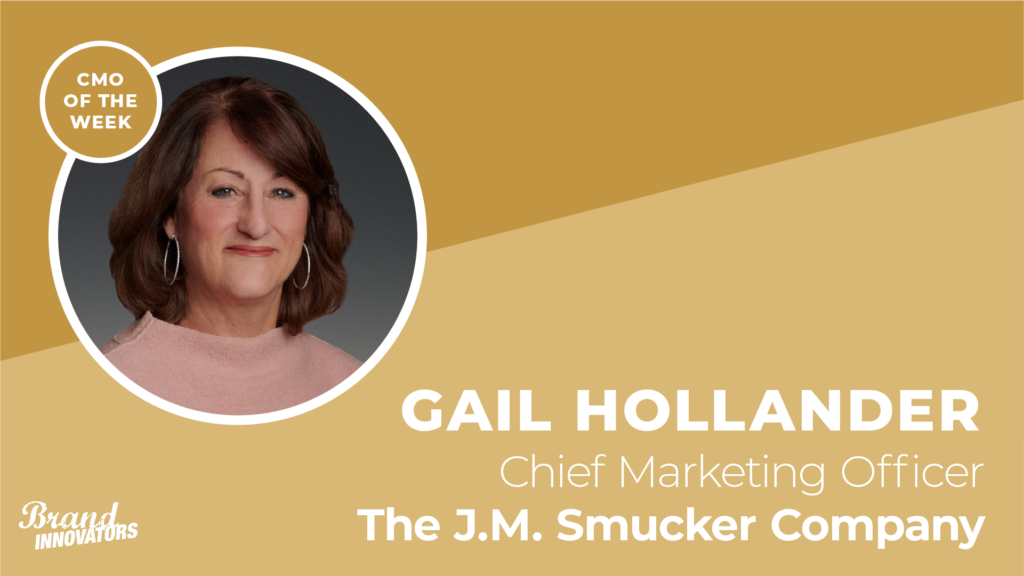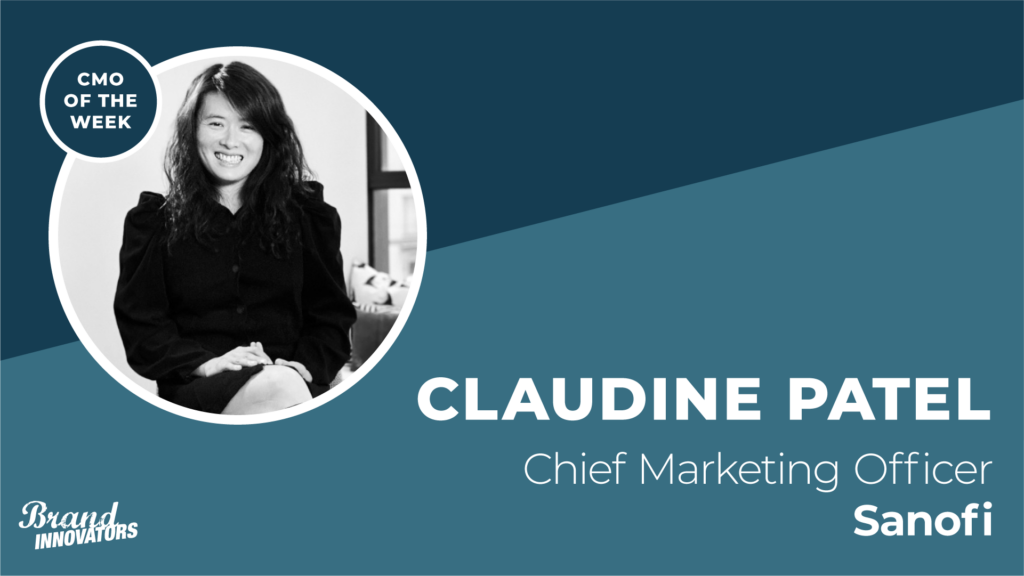Mazda North America’s Brad Audet has worked for the brand for the last 11 years –both internally and on the agency side. As chief marketing officer of the brand, his job is to inspire people through the driver experience and enrich their journey. To achieve this, the brand is focused on emotional storytelling.
“We exist to enrich lives,” says Audet. “In the last couple of years, we’ve done some really interesting things in the content space. We’re very close to launching a repositioning of the Mazda brand in a much more contemporary way that is very reflective of the needs of society, what’s happening culturally, what’s happening in the automotive space. It’s going to be really distinctive for us as a company and as a brand.”
Audet will be speaking at Brand Innovators Marketing Leadership Summit at Cannes on Tuesday afternoon at the Beach Stage. Heading to Cannes this week, Audet is looking forward to the UN Global Compact’s CMO Think Tank where he hopes to explore “how we continue to push forward the UN sustainability goals from a marketing community standpoint.”
Prior to joining Mazda in 2020, Audet worked on the business at The Garage agency. He has also held senior roles at WPP’s Team Detroit, JWT and Mullen. We caught up with him before the event from his office in Los Angeles to discuss industry transformation, the importance of emotion and creativity at Cannes. This interview has been edited for length and clarity.
Can you talk about how innovation plays into your work?
Innovation has to have a clear strategic intent and outcome to deploy. We look at the role of technology to help the people that we serve. It is to solve customer experience problems and create better relationships with customers. We want to be very easy for our stakeholders to do business with.
In the advertising space, there’s been a lot of conversation over the last couple of years on the implications of AI and how that’s going to transform our business. We’re using AI in a number of different production and creative applications, but it’s one of those things where we’re continuing to evaluate it and figure out the best way to approach it. From our standpoint, there’s a balance between how you bring machine-driven innovation together with the warmth of the human touch in a unique combination. People still want to have human interactions. They don’t want everything to be technology driven.
How is the automotive category evolving and what are you doing to keep up?
If you look at the category as a whole, cars have become higher quality. Their safety has risen. The craftsmanship, the reliability, the quality, the dependability of the cars have all risen. In some ways you could argue that the cars are largely becoming commoditized because a lot of the things that are important to customers have risen for all the companies.
So the importance of the branded experience has probably never been more important than it has as we move forward. Clearly the product still plays a very important role but increasingly customers are interested in how companies make them feel. We’re putting a lot of energy and emphasis around how we make people feel in a very prescriptive way that addresses the areas of opportunity that we have as individuals, as communities, as culture and as society moving forward.
There’s also a lot of technology innovation with electric vehicles and things of that nature. I’m not 100% sure that the customer demand equation is there right now as it is largely driven by federal or state regulation. But I would also argue that maybe we haven’t put forward an argument for the customer on the value of EV either.
What is your approach to showing up in culture?
That’s one of the things that we’re defining and have been working on since we moved our creative and integrated marketing relationship to VML. We’ve really spent a lot of time understanding the marketplace and where we have opportunity. Coming out of the pandemic, people largely want to feel emotional movement. They want to feel moved by things in their life. That’s why they hunger for experiences. They hunger for togetherness. They hunger for satisfaction and fulfillment.
As a brand and as a business, we have the opportunity to enrich people’s lives by creating those experiences that are very emotionally moving for them. Emotionally moving can take on a lot of different things. It could be the enabler that helps you strive forward in your life. It could also give you a sense of belonging to a larger community. It could create an uplifted sense of optimism.
The role of how a company and a brand needs to serve stakeholders has evolved. It’s not just about the shareholder anymore. It’s about really being good stewards and enablers and ambassadors for those people that we serve, whether it’s our customers, our dealers, our employees, our supplier base, and communities we interact with and do business with.
Are there any marketing challenges that keep you up at night?
It’s highly competitive in the automotive space right now as inventories have grown post pandemic and affordability is still a giant issue for customers. Trying to fight for a share of wallet with customers and to get them to pay the higher prices for what vehicles cost right now is a bit of a challenge. Additionally, as marketers, we’re all suffering from messaging fragmentation. How do you land solidly with customers in a world that is so fragmented, so diverse, with so many options and so much technology available to reach customers.
The black box can get very big and overwhelming sometimes. It’s constant measurement, adjust, measurement, adjust to determine that you’re doing right. But in the world of technology and innovation and marketing, for a period of time, we lost focus as an industry of the value of the big idea or the idea that emotionally binds people together. There is a little bit of a return to that when you hear people talk about content and compelling storytelling and the strength of brands through the lens of communities that they serve and things of that nature. I’m liking that there is a return to a richer storytelling around the value of the brand.
How does your background help shape your perspective in your current role?
With the exception of four years, I have spent the majority of my career working in the agency environment. I’ve had the ability to work in a number of different channels. I started in sponsorships and went into CRM before I got into the brand and account space. I’ve had the opportunity to work on 30-40 different clients in my career, which has given me the ability to work on a lot of different problems. All of that gets stitched together as a quilt of experience that brings a lot of value to the current job that I’m in right now.
Marketers put a lot of reliance on their agency ecosystem to get things done, so understanding what motivates the other side of the equation is very important. One of the key things I’ve learned is what motivates agencies. A lot of times you see marketers that have worked in the client organization for 20+ years and they really don’t understand what makes the agency click and how to get the best work out of the agency. As clients, you get the agency you deserve. We have to accept responsibility for getting the best out of our agencies.
Heading into Cannes, how are you thinking about creativity?
We are all judged by our creativity. How that creativity manifests is different for every business. As marketers, our responsibility is to create value for the companies that we work for and we do that by creating value for our customers. Creativity takes different forms at different times. Sometimes we get excited to go off and invent what’s new and we don’t always look backwards enough to say what has worked and why and where the truth of wisdom is in that. There has to be a little bit of a balance of looking forward with looking back.




